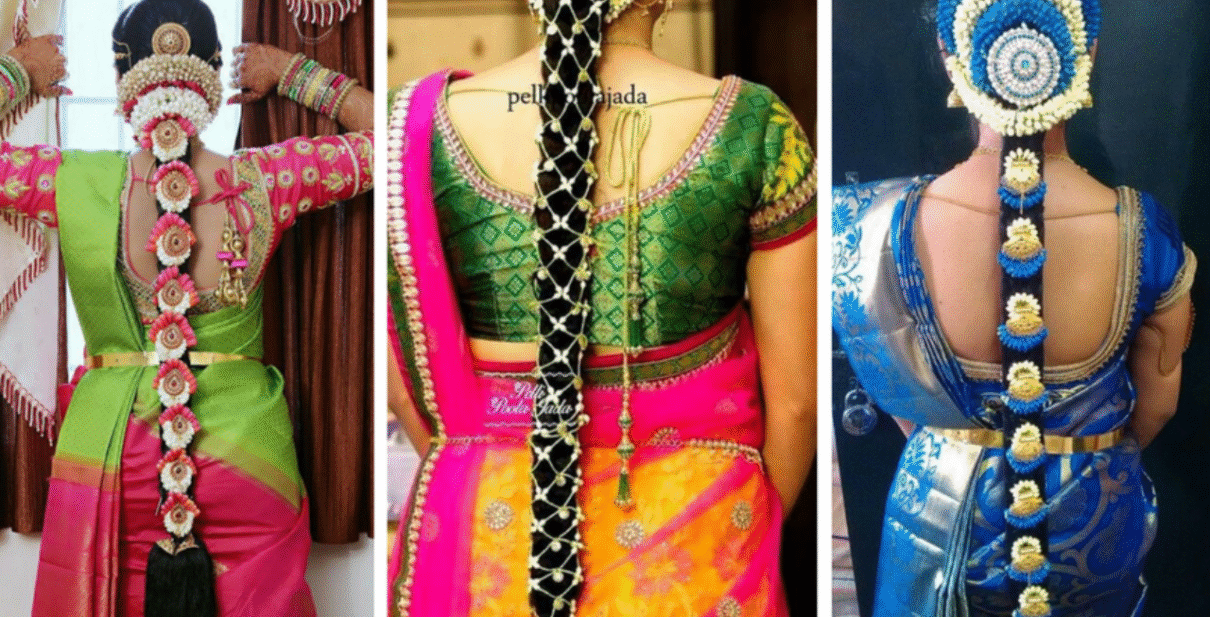South Indian weddings are rich with meaningful traditions, many of which involve flowers. These floral customs carry deep spiritual and cultural significance, connecting modern brides to their ancestral heritage. Understanding these traditions helps you appreciate the beauty and meaning behind each ceremonial element.
1. Kanyadanam – The Sacred Gift of Flowers
The Tradition: During the kanyadanam ceremony, the bride’s parents offer their daughter to the groom along with sacred items, including specific flower arrangements. This moment represents the transfer of responsibility and blessings.
Flower Significance:
- Lotus: Purity and divine beauty
- Jasmine: Auspiciousness and new beginnings
- Marigold: Prosperity and fertility
- Rose: Love and devotion
Modern Application: Today’s brides often incorporate these traditional flowers into their kanyadanam platters while adding personal touches like family heirloom decorations or favorite flower varieties.
2. Mangala Snanam – The Auspicious Bath Ritual
The Tradition: Before the wedding, both bride and groom undergo the mangala snanam, a ceremonial bath performed with turmeric, oil, and flower-infused water. This ritual purifies and prepares them for the sacred ceremony.
Flower Elements:
- Turmeric flowers: For purification and glow
- Hibiscus petals: For hair health and beauty
- Rose petals: For soft, fragrant skin
- Jasmine: For spiritual cleansing
Contemporary Adaptation: Modern brides create spa-like experiences, using organic flower extracts and traditional ingredients in luxurious bathroom settings while maintaining the ritual’s spiritual essence.
3. Pelli Kuthuru – The Bridal Flower Crown
The Tradition: The bride wears a special flower crown or elaborate hair decoration that signifies her transition from maiden to wife. Different regions have varying styles, but flowers remain central to this tradition.
Regional Variations:
- Andhra Pradesh: Heavy jasmine garlands with gold threads
- Tamil Nadu: Elaborate temple jewelry style with flowers
- Karnataka: Mixed flower crowns with traditional elements
- Kerala: Delicate jasmine with minimal gold accents
Modern Interpretation: Contemporary brides blend traditional flower arrangements with modern hairstyling techniques, creating Instagram-worthy looks that honor tradition while expressing personal style.
4. Aksharabhyasam – The Learning Ceremony Flowers
The Tradition: Though primarily for children, this ceremony’s flower traditions influence wedding decorations. Flowers represent knowledge, wisdom, and the beginning of new learning – perfect symbolism for married life.
Symbolic Flowers:
- Saraswati’s Lotus: Wisdom and knowledge
- White Jasmine: Pure intentions
- Yellow Marigold: Prosperity in learning
- Tulsi: Sacred protection
Wedding Connection: These flowers often appear in wedding mandap decorations, symbolizing the couple’s commitment to learning and growing together throughout their marriage.
5. Hasta Milap – The Hand-Joining Flower Ceremony
The Tradition: During the hand-joining ceremony, flowers are placed between the couple’s palms as they make their vows. This creates a fragrant, beautiful moment that photographers love to capture.
Flower Choices:
- Red roses: Passionate love
- White jasmine: Pure intentions
- Mixed petals: Variety and abundance in life
- Sacred tulsi: Divine blessings
Photo-worthy Moments: This tradition creates stunning visual moments. Modern couples often coordinate flower colors with their wedding theme while maintaining the traditional significance.
Incorporating Traditions in Modern Weddings:
Planning Tips:
- Research your family traditions: Different families may have unique customs
- Consult with elders: Grandparents often know forgotten details
- Document the meanings: Create a wedding program explaining each tradition
- Hire knowledgeable vendors: Choose florists familiar with traditional requirements
- Practice ceremonies: Rehearse with family members before the big day
Budget-Friendly Approaches:
- Use artificial flowers for practice sessions
- Focus on key traditions that matter most to your family
- Combine multiple traditions in single flower arrangements
- Choose seasonal flowers to reduce costs



